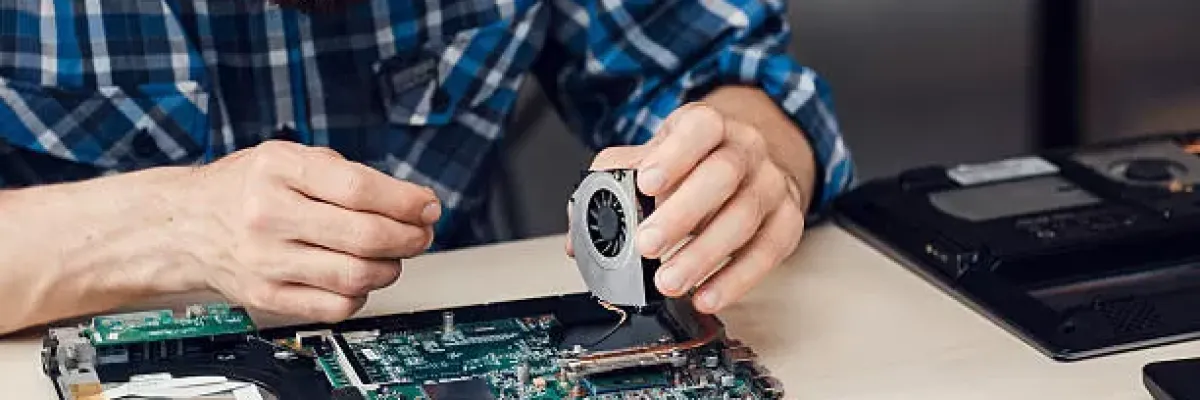
Introduction of Motherboard for Laptop
The motherboard, also known as the mainboard or system board, is the central component of a laptop that connects all the other hardware components together. It provides the electrical and logical connections between the CPU, memory, storage devices, and other peripheral devices such as the display, keyboard, touchpad, and USB ports.
The motherboard is typically a flat printed circuit board that contains a variety of electronic components, including capacitors, resistors, diodes, and transistors. It also has sockets or slots for connecting the CPU, memory modules, storage drives, and other expansion cards such as graphics cards or Wi-Fi cards.
10 Ideas for Enhancing Your Motherboard for Laptop
Upgrading the RAM:
Upgrading the RAM is a popular and relatively easy way to improve your laptop's performance. By adding more RAM, your laptop will be able to handle more applications and multitask more efficiently. Make sure to check the maximum RAM capacity supported by your laptop's motherboard and choose RAM modules that match the specifications.
Replacing the processor:
Upgrading the processor is another way to boost your laptop's performance. However, this can be a bit more complicated than upgrading the RAM, as you need to make sure that the new processor is compatible with your laptop motherboard. You may also need to update the BIOS before installing a new processor.
Installing a new graphics card:
If your laptop is designed to accept a dedicated graphics card, upgrading it can significantly improve the performance of graphics-intensive applications such as gaming, video editing, and 3D modeling. Make sure to choose a graphics card that is compatible with your laptop's motherboard and has the necessary power and cooling requirements.
Adding an SSD:
Replacing the laptop's hard drive with an SSD can make a huge difference in the speed and responsiveness of your laptop. SSDs are faster and more reliable than traditional hard drives and can significantly reduce boot and load times. Make sure to choose an SSD that is compatible with your laptop's motherboard and has the appropriate form factor (e.g., 2.5-inch or M.2).
Installing a Wi-Fi card:
If your laptop does not have a built-in Wi-Fi card or if the existing one is outdated, installing a new Wi-Fi card can enhance your laptop's internet connectivity. Make sure to choose a Wi-Fi card that is compatible with your laptop's motherboard and supports the latest Wi-Fi standards (e.g., 802.11ac or 802.11ax).
Upgrading the audio card:
If you use your laptop for audio production or listening to music, upgrading the audio card can improve the sound quality. You can either replace the existing audio card with a better one or install an external USB sound card for better performance.
Adding a USB 3.0 card:
Adding a USB 3.0 card can significantly improve the speed of file transfers and allow you to connect more high-speed devices to your laptop. Make sure to choose a USB 3.0 card that is compatible with your laptop's motherboard and has enough power to support all your devices.
Replacing the cooling system:
If your laptop tends to overheat, replacing the cooling system can help keep the temperature down and prevent damage to the motherboard. You can either replace the existing cooling fan with a more powerful one or install an external laptop cooler for better performance.
Installing a battery with a higher capacity:
If your laptop's battery life is short, installing a battery with a higher capacity can extend the runtime and allow you to work longer without a charge. Make sure to choose a battery that is compatible with your laptop's motherboard and has the appropriate voltage and capacity.
Upgrading the BIOS:
Upgrading the laptop's BIOS can improve compatibility with new hardware and software, as well as provide new features and bug fixes. However, be sure to follow the manufacturer's instructions carefully when upgrading the BIOS, as a failed BIOS update can cause serious damage to the motherboard.
Conclusion
In conclusion, the motherboard is a critical component of a laptop that connects all the hardware components together and allows them to communicate with each other. It provides the foundation for the laptop's functionality and performance. Upgrading or enhancing your laptop's motherboard can improve its overall performance, including faster processing, more memory, better graphics, faster storage, improved connectivity, and more. However, it's important to ensure that any upgrades are compatible with your laptop's existing hardware and follow manufacturer instructions carefully to avoid damaging the motherboard or other components

Leave a Comment